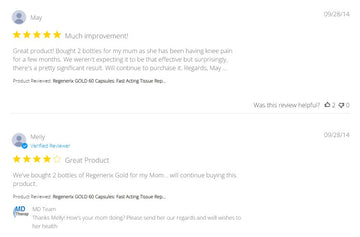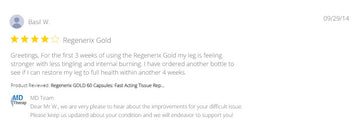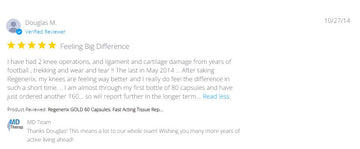Why Tai Chi helps (the principles)
-
Rhythmic, low-load weight shifting: Slow transfers of body weight train joint lubrication and alignment while keeping peak knee/hip loads modest—useful for knee OA and patellofemoral pain.
-
Motor control & balance: Continuous stance changes refine foot/ankle proprioception, glute and quad co-contraction, and postural stability—key for confident walking and stairs.
-
Range within comfort: Micro-bent knees and gentle hip hinge preserve joint space and reduce shear; depth is self-regulated.
-
Breath & down-regulation: Coordinated diaphragmatic breathing can ease muscle guarding and perceived pain, helping consistency.
-
Whole-chain strengthening: Even at slow speeds, Tai Chi challenges calves, quads, glutes, hip rotators, and trunk stabilizers.
How to start (safe setup):
-
Practice on flat ground, shoes or barefoot with steady support nearby.
-
Keep knees softly bent, knees tracking over 2nd–3rd toes; tall spine.
-
10–20 minutes, 3–5×/week. Add 5 minutes weekly toward 30–40 minutes as tolerated.
-
Pain rule: keep ≤3/10 during/after; if soreness lingers >24 h, shorten stance depth or session time and re-progress.
Limits of exercise alone
-
Doesn’t fix systemic drivers (sleep, stress, diet, metabolic health).
-
Flares cap training load; people under-load or stop.
-
Many need targeted strength/mobility in addition to Tai Chi.
-
Connective tissues remodel slowly (months), so pairing consistent practice with recovery and nutrition works best.
Why pair Tai Chi with nutritional correction
-
Improve circulation: support oxygen and nutrient delivery to working tissues.
-
Promote repair: provide structural building blocks (e.g., collagen peptides, hyaluronic acid) that your practice helps “signal” into use.
-
Support a healthy inflammatory response: keep day-to-day training tolerable.
-
Protect tissues: antioxidants and matrix-support nutrients help buffer oxidative/catabolic stress.
Botanicals & nutrients often used for joint support
(Combines traditional lore with published research; evidence ranges from promising to mixed. Check personal suitability and interactions with your clinician.)
Ginger (Zingiber officinale)
-
Traditional: Ayurveda & East Asian medicine for circulation and “wind-damp” aches.
-
Research snapshot: Standardized ginger has shown modest symptom support in osteoarthritis cohorts in several trials.
Turmeric / Curcumin (Curcuma longa)
-
Traditional: Core Ayurvedic spice for comfort and resilience.
-
Research snapshot: Curcumin extracts (especially bioavailability-enhanced forms) have reduced knee-OA pain and improved function versus placebo in multiple studies.
-
Food reality: Culinary turmeric has low curcumin—hard to reach study-like intakes from diet alone.
Boswellia / Frankincense (Boswellia serrata)
-
Traditional: Ayurveda’s shallaki resin for joints.
-
Research snapshot: Standardized boswellia extracts have demonstrated improvements in pain/function in osteoarthritis studies.
Winter Cherry / Ashwagandha (Withania somnifera)
-
Traditional: Adaptogen for recovery and musculoskeletal comfort.
-
Research snapshot: Trials suggest immunomodulatory effects and symptom support in knee-pain cohorts.
Collagen Peptides (Type II emphasis)
-
Concept: Provide peptides that may support cartilage metabolism and tendon/ligament integrity—complementary to Tai Chi’s gentle loading.
Hyaluronic Acid (oral)
-
Concept: Contributes to joint lubrication/viscosity and smooth motion; oral forms are used to support comfort and function.
Cat’s Claw (Uncaria spp.)
-
Traditional: Peruvian/Amazonian remedy for “rheumatism.”
-
Research snapshot: Placebo-controlled work reports short-term improvements in activity-related pain; broader evidence is still developing.
The practicality problem
-
Food-only dosing is hard: Reaching research-like intakes of turmeric/curcumin or ginger via meals every day is impractical.
-
Pill burden & cost add up: Buying six–seven separate products (ginger, turmeric, boswellia, ashwagandha, collagen, HA, cat’s claw) multiplies capsule counts and monthly spend compared with one comprehensive formula.
A convenient all-in-one option: Regenerix Gold™
Prefer Tai Chi + nutrition without juggling bottles?
-
What’s inside: Hydrolyzed Type II Collagen, Hyaluronic Acid, and a proprietary blend of Ginger, Turmeric, Frankincense (Boswellia), Cat’s Claw, and Winter Cherry (Ashwagandha)—the same seven ingredients discussed above—combined to promote healthy joint and muscle function and support everyday recovery.
-
Dosing: 2–3 capsules daily.
-
Price: $98 a bottle.
-
Why it fits here: One formula covering seven evidence-linked ingredients is simpler—and typically more cost-effective—than buying 5–7 separate supplements.
-
Track record: Recommended by doctors and physical therapists internationally for about a decade (individual clinician views vary).
Supplements support healthy function; they don’t diagnose, treat, or cure disease. Check interactions (e.g., anticoagulants with turmeric/ginger/boswellia) and personal suitability with your clinician.
A simple Tai Chi plan for this week
-
Week 1–2 (10–15 min):
-
Opening/closing, Commencement, Parting the Wild Horse’s Mane (short range), White Crane Spreads Wings (shallow stance).
-
-
Week 3–4 (20–30 min):
-
Add Brush Knee, Play the Lute, Repulse Monkey with small steps; pause if knee pain >3/10 or lingers >24 h.
-
-
Support moves (2–3×/wk): Chair sit-to-stands, side-lying hip abduction, calf raises, gentle quad/hamstring stretches.



